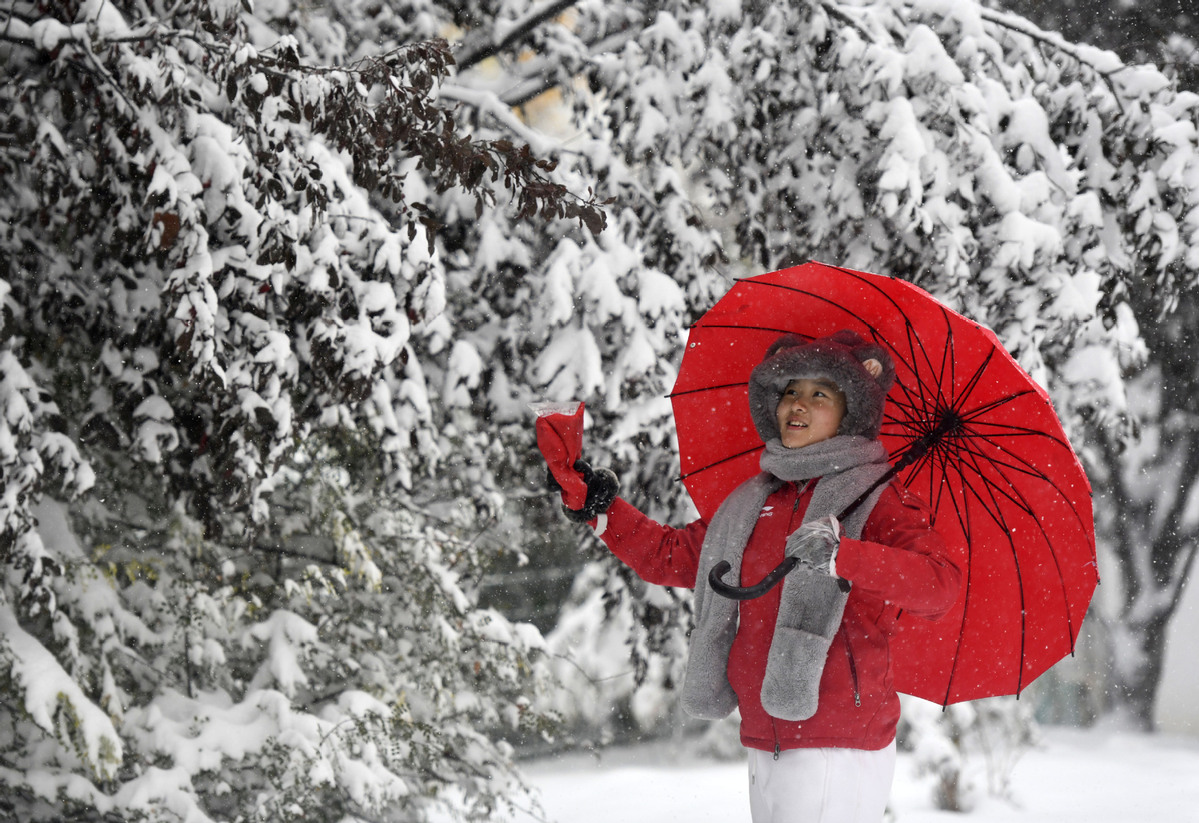Cold snap hits northeastern, southern areas


Weather conditions expected to linger in most parts of nation, forecaster says
The massive snowstorms that have swept across northern China since the weekend are forecast to continue causing problems in the northeast, where meteorological services warned people to take precautions against icy roads, traffic jams and possible power outages.
Up to 36 millimeters of new snow was forecast for areas including the Inner Mongolia autonomous region and Liaoning, Jilin and Heilongjiang provinces in the 24 hours beginning at 2 pm on Monday, the National Meteorological Center said. It added that the new snow could bring total snow accumulation in some areas to around 30 centimeters.
Liaoning's provincial meteorological service upgraded its emergency response for weather disaster from the second level to the first in the four-tier system on Monday. The railway bureau of Shenyang, the provincial capital, sent vehicles to remove frost and ice from the rails.
Jilin's meteorological service renewed its snowstorm red alert, the highest in the four-level system, on Monday. Under the alert, schools and factories, except for essential industries, need to shut down, and some modes of transportation could be suspended. In addition, local governments need to prepare disaster-relief materials.
In a video on the website of China Youth Daily, snow blown by strong wind drifted, leaving a house in Tongliao, Inner Mongolia, half-buried on Sunday. In the same video, people on a street struggled to walk amid the wind-driven snow, and an off-road vehicle towed a broken-down bus on a snowy street.
"While the heavy snow is concentrated in the north and northeast, the cold wave continues to advance southward, affecting most of the central and eastern areas," the center said.
In some areas south of the Yangtze River as well as some northern parts of South China, temperatures were forecast on Monday to plummet by as much as 16 C, the center said.
Even in South China's Hainan province, which has a tropical climate, temperatures were expected to drop from around 20 C, the low on Sunday, to a low of 15 C on Tuesday.
Yang Shu'nan, a forecaster at the center, said that drastic temperature drops related to cold air masses are more likely to occur in autumn than winter.
"In spring and autumn, when seasons begin to change, weather systems including cold air masses are active. This year, it was warm in autumn, so a blast of cold air tended to cause temperatures to drop drastically," she said.
"For the next two weeks, cold air will still linger in most parts of China, but to a lesser extent," Yang said.
The National Climate Center said that in December, temperatures in most parts of China are forecast to be near or above normal, while temperatures in Northeast China and eastern Inner Mongolia are expected to be lower than usual.
The center also said that in January and February, extreme cold weather is highly likely to hit eastern and central areas, and freezing rain and snow could hit areas south of the Yangtze River.
- Crew members ready for Shenzhou XXI mission
- China urges Philippines to 'mend its ways' over South China Sea provocations
- Key things to know about formulation of recommendations for China's 15th five-year plan
- Hainan striving to be a 'low-carbon island'
- Chinese-German metals company opens innovation center in Shandong province
- Automaker leverages premium audio to ride China's intelligent vehicle wave





































